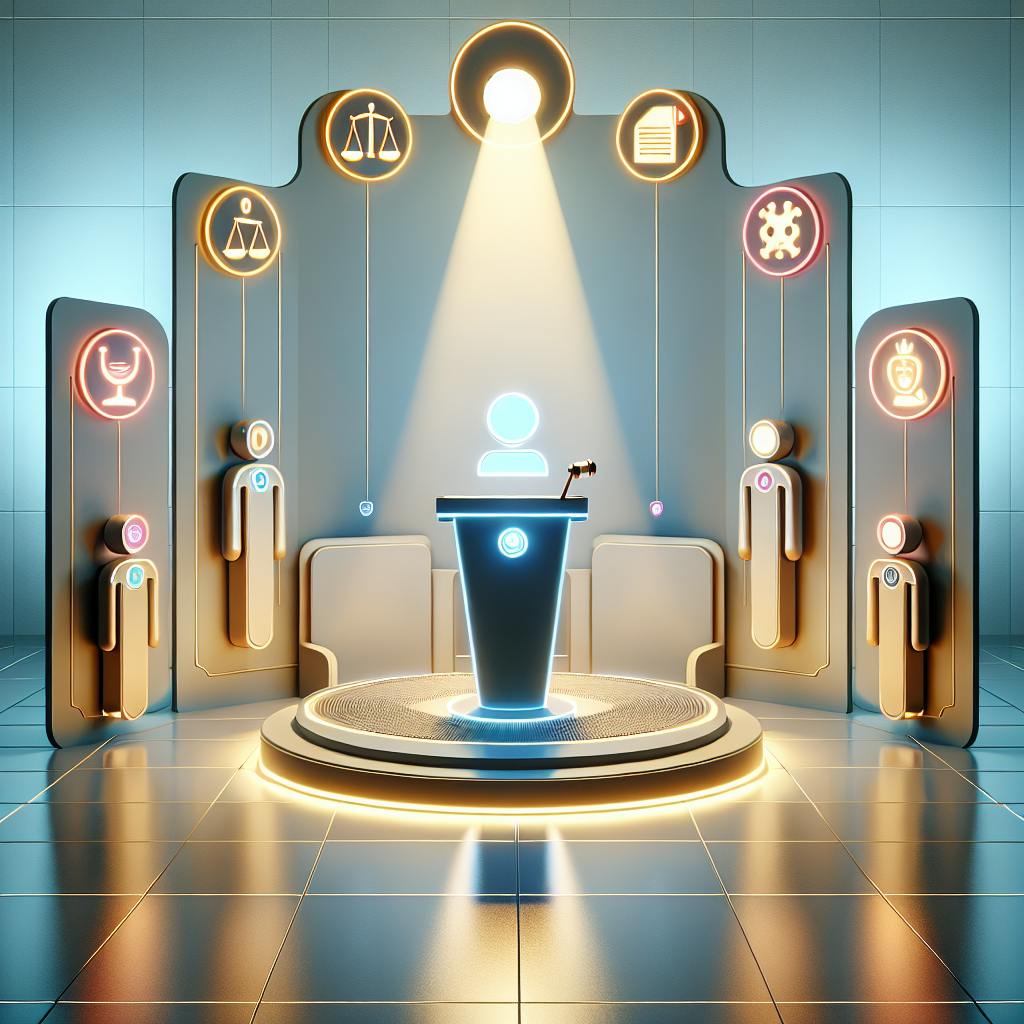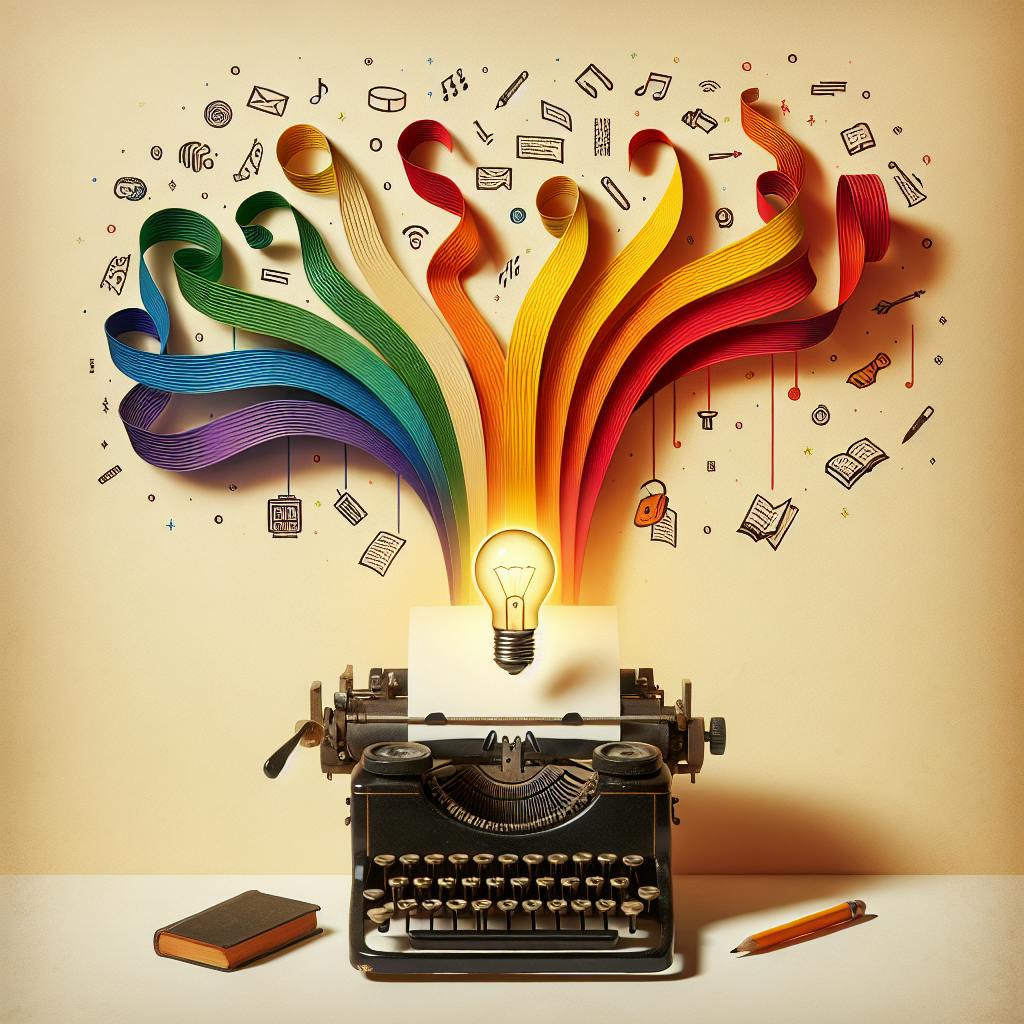With the rise of chatbots like ChatGPT, it's clear that conversational AI is becoming mainstream. However, these proprietary models have limitations in capabilities and transparency.
The good news is, there are open source AI tools that can enhance ChatGPT in exciting ways. By combining these accessible models, we can build more powerful, ethical, and creative chatbots.
In this post, we'll explore the top open source AI projects for advancing ChatGPT, like GPT-Neo, EleutherAI, and Stability AI. We'll also cover integration tips to seamlessly combine open source models, along with advanced applications and build guides to create your own open source ChatGPT alternative.
Introduction to Opensource AI Enhancement for ChatGPT
ChatGPT is a conversational AI system developed by OpenAI that can understand natural language queries and generate human-like responses. While impressive, ChatGPT still has limitations in accuracy and capabilities. Integrating open-source AI tools can enhance ChatGPT by providing additional models for specialized tasks.
Understanding ChatGPT and the Role of Open Source AI
ChatGPT was trained on a broad range of conversational data to handle general queries. However, it lacks narrow expertise for specific domains.
Open-source AI tools created by the AI community can provide targeted models to improve ChatGPT:
- Language models for legal, medical, or financial conversations
- Tools for advanced math, coding, game strategy
- Models for creative writing, image/video generation
By combining these open models with ChatGPT through API integrations, we can create a more versatile assistant.
The Advantages of Opensource AI Tools in ChatGPT Enhancement
Key benefits of enhancing ChatGPT with open-source AI include:
- Increased accuracy for domain-specific conversations by integrating expert models.
- Additional capabilities like text/image generation from creative models.
- More personalized conversations powered by community-trained models.
- Transparency into model capabilities when using public open-source AI.
Overall, integrating open-source AI tools can unlock more advanced and specialized features in ChatGPT. With community collaboration, we can overcome limitations and create an AI assistant that continues to improve.
Is there any open-source AI?
Open-source AI tools and frameworks have exploded in popularity recently. Here are some of the top open-source AI options available:
TensorFlow
One of the most popular open-source machine learning frameworks. Originally developed by Google, TensorFlow enables building and training neural networks and other AI models. It supports advanced techniques like neural architecture search and reinforcement learning.
Hugging Face
A community platform for sharing and using open-source AI models. Hugging Face provides access to thousands of models for natural language processing, computer vision, audio, and more. These models can be fine-tuned on custom data.
EleutherAI
An open collective working on AI safety research and developing open-source AI tools. Their key project is GPT-Neo, an open recreation of OpenAI's GPT-3 model architecture.
PyTorch
An open-source machine learning framework used for developing neural networks. It offers flexibility and speed for building AI models. PyTorch is maintained by Meta AI.
The open-source AI community keeps expanding with more tools and models. Collaboration helps accelerate innovation while ensuring transparency and accessibility. As AI becomes more powerful, maintaining openness is crucial.
What is the best free OpenAI?
Open source artificial intelligence (AI) tools offer free and customizable alternatives to proprietary AI systems like ChatGPT. Here are some of the best open source AI options:
TensorFlow
One of the most popular open source AI libraries, TensorFlow provides pre-built neural network components for machine learning and deep learning applications. It's backed by Google and has an extensive community supporting continued development. TensorFlow enables training customized AI models.
Hugging Face
Hugging Face hosts thousands of open source AI models like GPT-2 and BERT through its model hub. It also offers tokenizers, datasets, metrics, and other NLP building blocks. Hugging Face makes cutting edge AI accessible to developers and researchers.
EleutherAI
EleutherAI, a grassroots collection of AI researchers and engineers, focuses on open source language models. Their GPT-Neo series replicates capabilities of proprietary models while avoiding potential harms. EleutherAI demonstrates the possibilities of open collaboration on AI.
Accord.NET
Accord.NET provides AI algorithms and machine learning tools for .NET applications. It features computer vision, statistics, neural networks, signal processing and more. Accord.NET enables integration of AI capabilities without needing deep ML expertise.
Open source AI offers customization, transparency, and community-driven development. While less powerful than commercial systems currently, open source AI tools provide building blocks to create tailored solutions. Combining open source models and data can enhance ChatGPT's capabilities.
Is open-source AI safe?
Open-source AI systems have raised valid concerns around safety and security. However, with proper governance and oversight, open-source AI can enable tremendous progress while mitigating risks.
Responsible development principles
Several organizations have published best practices for developing AI responsibly:
- Google's AI Principles promote beneficial, safe, accountable, and ethical AI systems. They advocate for inclusivity, explainability, and oversight throughout the AI lifecycle.
- The Montreal Declaration outlines values-based principles like well-being, autonomy, justice, privacy, knowledge, democracy, and accountability to guide AI development.
- The OECD AI Principles similarly highlight inclusive growth, sustainable development, human-centered values, transparency, robustness, security, safety, accountability, and privacy/data governance.
Adhering to these principles during open-source AI projects can promote positive outcomes.
Security considerations
- Access controls, testing protocols, vulnerability assessments, and monitoring help secure open-source AI systems.
- Sandboxed environments isolate untrusted code and limit access to sensitive data or hardware.
- Differential privacy, federated learning, and encryption techniques enable open collaboration while protecting user privacy.
- Industry standards groups and policymakers continue addressing AI security issues to balance openness and safety.
With thoughtful design, open-source AI can expand access to AI while minimizing risks. The community must continue working together to ensure AI systems remain secure, transparent, and beneficial overall.
Is OpenAI no longer open source?
OpenAI was founded in 2015 with the goal of advancing artificial intelligence in a way that benefits humanity. When it started, OpenAI took an open source approach, releasing much of its research and code publicly. However, over the past few years, OpenAI has shifted towards a more closed and proprietary model. Here are some of the key changes:
- In 2019, OpenAI created a for-profit company structure and accepted $1 billion in funding from Microsoft. This signaled a move away from their non-profit open source roots towards a more commercial direction.
- OpenAI's latest AI system, GPT-3, has not been open sourced. Access is limited to select partners and customers via an API. This has raised concerns that OpenAI is increasingly keeping its technology closed for commercial reasons.
- More recently, OpenAI has indicated that future versions of GPT may remain closed source as well. While parts of its earlier GPT-2 model were released publicly, GPT-3 and beyond seem to be part of OpenAI's shift to proprietary AI products.
So in summary - yes, OpenAI does seem to be moving away from their original open source ethos towards a more closed, commercial approach focused on monetizing their AI research via proprietary products and licensing. This has been a controversial shift within the AI community given OpenAI's early open source messaging and non-profit status. The company argues this is necessary to ensure responsible development, but critics worry it goes against principles of openness and transparency.
sbb-itb-b2c5cf4
Exploring Best Open Source AI Models for ChatGPT
Open source AI models provide exciting opportunities to enhance and expand ChatGPT's capabilities. By integrating open source language models, developers can tap into cutting-edge AI to create more powerful chatbot assistants. This section explores some of the top open source AI projects that are advancing natural language processing and generative AI.
GPT-Neo: The Open-Source AI GPT Alternative
GPT-Neo is an open source AI model created by EleutherAI that replicates many of the core capabilities of OpenAI's GPT-3 API. With 340 billion parameters, GPT-Neo approaches the size and performance of GPT-3's 175 billion parameter Davinci model.
Key features of GPT-Neo include:
- Advanced natural language understanding and generation
- Ability to summarize, translate, answer questions and more
- Creative writing and text continuation
- Compatibility with TensorFlow and PyTorch frameworks
By integrating GPT-Neo into ChatGPT pipelines, developers can significantly enhance conversational abilities. For example, GPT-Neo could enable more nuanced dialogues, personalized interactions, and accurate text generations.
EleutherAI's GPT Models: Paving the Way for Public AI Infrastructure
Founded in 2020, EleutherAI is an open source AI research group dedicated to building free language models. Their goal is to pioneer publicly accessible AI systems that are safe, ethical and beneficial for society.
In addition to GPT-Neo, EleutherAI has released other notable models:
- GPT-J: A 6 billion parameter GPT variant comparable to GPT-3 in certain tasks
- GPT-NeoX: An experimental 20 billion parameter model approaching state-of-the-art results
By contributing open source models for the community, EleutherAI aims to shape an AI future aligned with the public good. Integrating their models into ChatGPT could significantly advance its conversational abilities while upholding ethical AI standards.
Stability AI: Advancing Generative AI with Open-Source Ethics
Founded in 2021, Stability AI develops generative AI systems focused on mitigating risks and biases. Their goal is to create AI that benefits humanity through openness, transparency and decentralization.
Stability AI's leading model is DALL-E, a 12 billion parameter version capable of generating realistic images from text descriptions. While specialized for computer vision tasks, DALL-E demonstrates Stability AI's commitment to advancing AI safely with open source tooling.
As conversational AI continues maturing, Stability AI's open and ethical approach could provide helpful models for expanding ChatGPT's capabilities responsibly. Integrating safeguards against biases and risks will be essential as these systems grow more powerful.
Integration Tips for Combining Open Source AI with ChatGPT
Leveraging TensorFlow and Hugging Face for Seamless Integration
Open source frameworks like TensorFlow and Hugging Face provide useful tools for integrating custom AI models into ChatGPT.
Some key tips when using these frameworks:
- Use TensorFlow to build and train your own AI models that can enhance ChatGPT's capabilities. You can then host the models and connect them to ChatGPT using Hugging Face's model hosting.
- Take advantage of Hugging Face's model hub which has thousands of open source models for natural language processing. Fine-tune them on your own data if needed.
- Ensure your models provide explainability and auditability to build user trust. Use tools like Hugging Face's Captum library.
- Handle issues like inconsistent outputs and contradictory information from different models through ensemble techniques.
Best Practices for AI Collaboration and Integration
When integrating open source AI tools with ChatGPT, following best practices around collaboration and transparency is key:
- Open source your model training code to enable reproducibility and auditing. Encourage community contributions.
- Thoroughly test for harmful bias before deployment. Leverage resources like Google's What-If tool.
- Clearly communicate capabilities and limitations of integrated models to set appropriate user expectations.
- Implement feedback loops to continually improve model performance based on real user interactions.
Adhering to principles around transparency and collaboration enables creating AI solutions that are ethical, aligned with human values and maximize benefit to society.
Navigating AI Regulation and Data Privacy During Integration
As the use of AI systems grows, governance frameworks around responsible development are evolving. When enhancing ChatGPT with open source tools, keep the following in mind:
- Understand applicable regional regulations around use of personal data, automated decision systems, transparency requirements etc.
- Minimize data collection to only what is necessary. Allow user control over data usage.
- Clearly communicate how user data may be used to train integrated models. Provide opt-out controls.
- Use differential privacy, federated learning and other privacy-preserving techniques where suitable.
Staying up-to-date on emerging best practices for AI governance helps create responsible and ethical solutions aligned to societal expectations.
Advanced Applications of Open Source AI in ChatGPT
Open source AI tools provide exciting opportunities to enhance and expand ChatGPT's capabilities. By incorporating large language models like GPT-4 and leveraging generative AI, we can push the boundaries of what conversational AI can achieve.
Incorporating Large Language Models like GPT-4 into ChatGPT
Integrating massive language models such as GPT-4 would significantly increase ChatGPT's knowledge and allow it to generate more coherent, nuanced responses. Some potential benefits include:
- Access to a vastly larger pool of data for more accurate answers
- Ability to understand and generate text across more domains
- Improved reasoning and common sense
- More personalized and contextually relevant responses
However, effectively integrating such large models presents technical challenges around compute resources and model stability that need to be addressed.
Enhancing Creativity with DALL·E 3 and Generative AI
Generative image models like DALL·E 3 have demonstrated impressive creative abilities for visual art generation. Combining such models with ChatGPT could enable powerful multimedia experiences. For example:
- Users could describe a scene and have ChatGPT generate images to match
- Conversations could seamlessly blend text and computer-generated visuals
- New forms of visually-creative expression may emerge from human-AI collaboration
Fully realizing this potential requires overcoming issues like consistency, image fidelity, and content moderation.
Machine Learning and Natural Language Processing Synergy
Recent machine learning advancements have fueled the rapid progress of natural language AI. This synergy creates opportunities to take conversational models like ChatGPT to the next level by:
- Applying techniques like transfer learning and reinforcement learning to further improve language understanding
- Leveraging ML to increase context handling, personalization and multi-turn conversations
- Enhancing NLP models to better mimic human language diversity
Continued research is critical to address robustness issues and reduce harmful bias. Responsible openness enables positive community impact on AI development.
Building an Open Source AI Chatbot with ChatGPT
Open source AI software provides a powerful way to build AI-powered chatbots that can understand natural language and hold conversations. By leveraging large language models like GPT-3 and frameworks like TensorFlow, developers can create conversational agents customized for specific use cases.
Here are some key steps and considerations when building an open source AI chatbot with ChatGPT:
Designing Conversational Flows with Open Source AI Software
When designing your chatbot's conversational flows, focus on mapping out the key dialogs and responses you want it to handle. Outline the happy paths a user might take as well as exceptions and edge cases.
Open source AI platforms like EleutherAI's GPT-Neo offer strong natural language processing capabilities to power the chatbot's ability to understand user intents and generate relevant responses. You can leverage transfer learning to fine-tune these models on your own conversational data sets.
It's also helpful to analyze chat logs from human agents to identify common questions, requests, and scenarios your chatbot should be able to address. This helps expand the conversational scope.
Data Analysis and Feedback Loops for Continuous Improvement
Continuously analyzing chatbot performance data enables you to identify areas for improvement. Track metrics like message accuracy, user satisfaction, question deflection rate and more.
By setting up active learning feedback loops, you can further refine the model by allowing users to flag incorrect responses, which can then be used as additional training data. This creates a virtuous cycle.
Open source AI communities also often collaborate to build better datasets, so participating can help accelerate learnings.
Community-Driven AI Development and Support
Getting involved with the open source AI community provides significant advantages in developing and supporting an AI chatbot.
Leveraging collective knowledge speeds development and reduces duplicate effort. Fellow developers share code, best practices, pretrained models and valuable insights.
Active forums and chat groups also exist to get help troubleshooting issues and collaborate on new features. The community support helps sustain open source AI projects over the long term.
In summary, open source AI unlocks powerful opportunities for creating custom chatbots with natural language capabilities. Following collaborative development approaches helps make the most out of community resources.
Key Takeaways on Enhancing ChatGPT with Open Source AI
Open source AI tools provide promising opportunities to enhance ChatGPT's capabilities. By combining multiple models, we can overcome individual limitations and create more powerful hybrid systems. However, integration must be done carefully and ethically.
Recap of Top Open Source AI Models for ChatGPT
- Models like GPT Neo show potential for few-shot learning and domain specialization
- DALL-E 3 and stable diffusion enable creative image generation
- TensorFlow and Hugging Face provide frameworks for custom model building
The Importance of Hybrid AI Systems in ChatGPT Enhancement
No single model is perfect. Combining multiple open source AI tools creates more robust systems:
- Complementary strengths and weaknesses
- Mitigate individual model biases
- Enable specialization while maintaining breadth
Careful, ethical integration is key to balance capabilities, safety, and oversight.
The Future of AI Innovation with Open Source Tools
Open source AI encourages collaboration and accountability:
- Community development and peer review
- Transparency to analyze model behavior
- Shared benchmarks and best practices
With responsible open source AI, we can work towards technical breakthroughs that benefit society. The path forward requires cross-industry cooperation.


